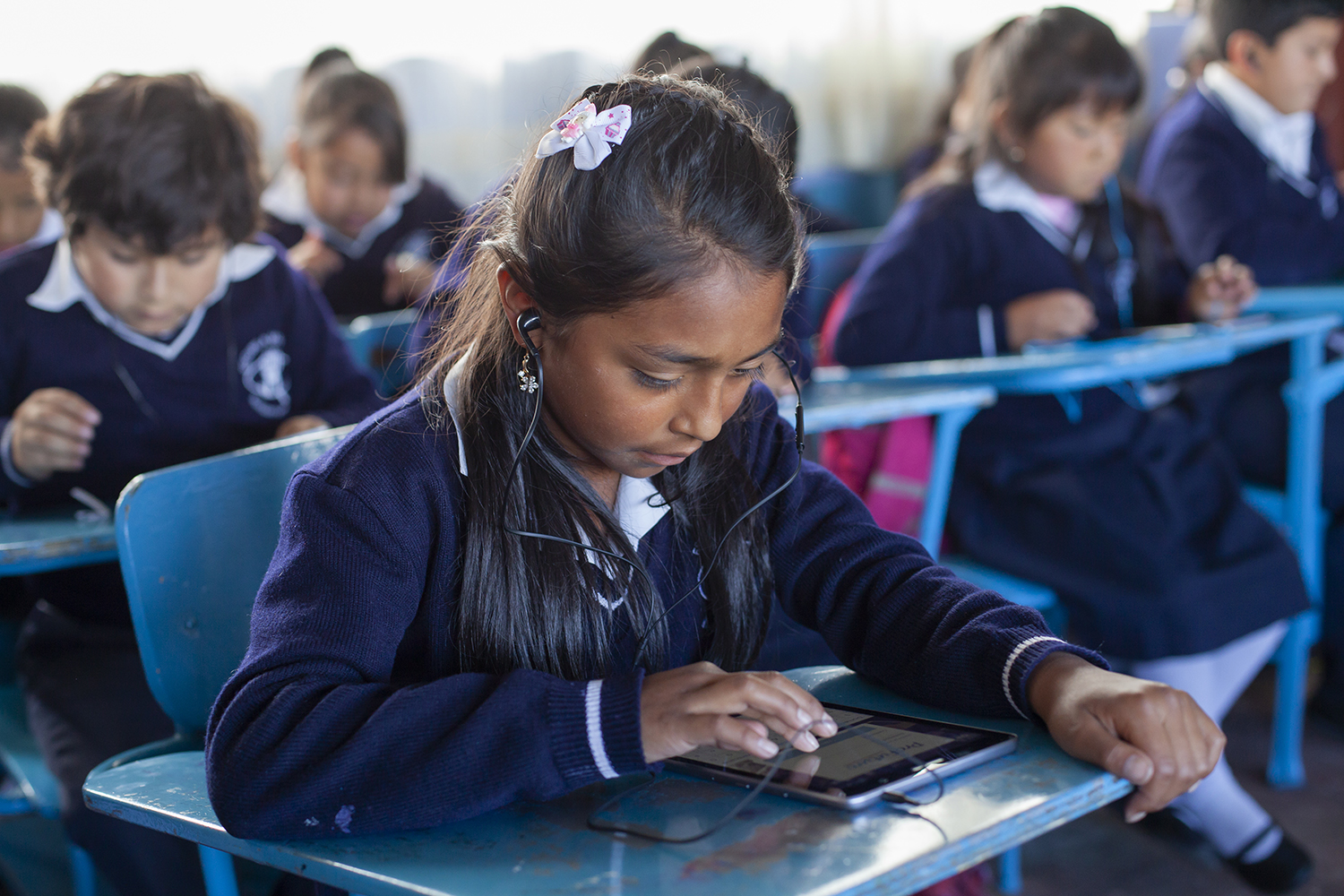The world has been discussing education and technology, their interactions, implications, challenges, and opportunities for years. But has anyone asked the students? Young people are one of the groups most affected by the influx of new technologies in the educational ecosystem. Do we know what they think about the issue? Are we aware of their concerns and needs? UNESCO’s GEM Report has decided to give them a voice: 1,500 young people and students from Africa (563), Pacific (423), Southeast Asia (165), Latin America (162), Arab States (118), South Asia (72), Europe (64), and the Caribbean (53) have spoken about how they are experiencing the introduction of technology in education and call on global authorities to prioritise their needs.
Young people are one of the groups most affected by the influx of new technologies in the educational ecosystem. Do we know what they think about the issue? Are we aware of their concerns and needs?
Technology Must Focus on Students’ Needs
One of the central demands of students, highlighted in the report, is that technology in education should be seen as a tool serving students, not as a one-size-fits-all solution to educational problems. Young people advocate for decisions on the use of technology in schools to be based on a careful analysis of their needs, ensuring that the technological tools proposed and used are appropriate and equitable.
The report notes that technology is often implemented uniformly, without considering differences in educational contexts, such as disparities between rural and urban schools or the digital divide affecting students from low-income families. Young people argue that technology should only be used when it is clear that it will benefit students and improve their learning, and any implementation should involve students in the decision-making process.
Equity in Access to Technology Remains a Critical Challenge
Young people assert that while technology has the potential to improve access to education, its distribution and use are deeply unequal. Significant disparities exist in access to technological tools, with notable differences between regions, social classes, and urban and rural contexts. The young participants in the consultations confirmed that many students in rural areas or impoverished communities lack access to basic electronic devices and the internet, exacerbating educational exclusion.
During the COVID-19 pandemic, these disparities were further exposed, with millions of students worldwide unable to participate in remote learning due to lack of access to technology. In this regard, the report notes that 31% of students globally did not have access to online education during the pandemic, a figure that rises to 72% among the poorest students.
To close this gap, young people call on governments and education policymakers to invest in technological infrastructure, particularly in disadvantaged regions. They also ask for reduced costs for internet access and electronic devices through subsidies, public-private partnerships, and government programmes that ensure all students have access to the technological tools needed for their education.
Technology as Support, Not a Replacement
Another recurring concern among students is that technology should not replace human interaction in education. While technological tools can complement and enhance the teaching process, they should not substitute for the role of teachers or the dynamics of face-to-face learning. Young people recognise the value of technology in offering new educational approaches and facilitating access to information, but they insist that learning remains a deeply human experience, requiring interaction, guidance, and emotional support.
The young people emphasise that the accelerated transition to online education, driven by the pandemic, highlighted the limits of online teaching. Many students experienced digital fatigue, emotional disconnection, and a lack of motivation when learning in isolation in front of a screen. Therefore, they stress that for technology to be effective in education, it must be used in a balanced way, combining digital learning with face-to-face education.
Training in Digital Skills for Students and Teachers
One of the main demands young people make in the report is the urgent need to improve digital skills, both their own and those of teachers. They highlight that while technology is increasingly present in classrooms, many students and teachers lack the necessary digital skills to make the most of these tools. The lack of training in digital skills creates an additional barrier to learning, especially in disadvantaged communities.
The report proposes that governments develop digital training programmes for both students and teachers, to ensure that all stakeholders in the education system can use technology effectively. It also suggests creating technology clubs in schools and offering online training workshops to strengthen digital skills.
For teachers, the challenge is not only learning to use technological tools but also integrating them into pedagogy in ways that enrich the teaching process. The report suggests that teacher training programmes should include both technical skills and pedagogical approaches that help teachers use technology inclusively and effectively in the classroom.
Online Protection and Safety
With the increasing presence of technology in education, young people also express concerns about online safety. The risks associated with using the internet, such as cyberbullying, privacy invasion, and exposure to inappropriate content, are a reality for many students. The report notes that it is essential for governments and educational institutions to develop online protection policies that ensure students’ safety while navigating the internet and using digital educational platforms.
Young people call for the creation of digital security protocols that include workshops on online privacy and cybersecurity. They also recommend the implementation of online safety modules in curricula to educate students on how to protect themselves from digital risks. Adult supervision and the establishment of screen time limits are also suggestions from the report to mitigate the negative effects of prolonged exposure to technology.
Closing the Gender Gap in Access to Technology
The report highlights that girls and young women face additional barriers to accessing technology, often due to social and cultural norms. In some contexts, families prioritise access to technology for boys, leaving girls at a disadvantage. Furthermore, perceptions that girls need more protection from online dangers can limit their access to digital devices and their participation in digital education.
To address this inequality, young people call for policies that promote equitable access to technology for girls and women. This includes awareness campaigns to combat gender stereotypes and programmes that encourage access and use of technology among girls from an early age.
Sustainability and Evidence in Technology Application
A critical aspect mentioned in the report is the lack of rigorous evaluation of the impact of technology in education. Young people emphasise that the implementation of technological solutions should be based on solid evidence demonstrating their long-term effectiveness. Often, decisions about integrating technology in schools are made without proper assessment of its real costs and benefits, which can lead to wasted resources without significantly improving educational outcomes.
The report suggests that digital education policies should include monitoring and evaluation mechanisms to analyse how technology affects learning in different contexts. This will allow policymakers to adjust their approaches and ensure that technology is fulfilling its goal of improving education in an equitable and sustainable way.
Youth Participation in Technology Decisions
Young people call for a more active role in decision-making, ensuring their voices are heard and that technological tools respond to their needs and realities. Therefore, the report emphasises the importance of involving young people in the design, implementation, and evaluation of educational technology policies.
This call is summarised in the slogan “Nothing about us, without us,” a demand that reflects young people’s desire to be included in processes that affect their education. Involving students in these decisions not only ensures that technological solutions are more effective but also fosters a sense of ownership and responsibility over their own education.
The GEM Youth Report 2024 provides a clear and compelling vision of how young people perceive the role of technology in education.
The GEM Youth Report 2024 provides a clear and compelling vision of how young people perceive the role of technology in education. While they recognise its potential to improve access and the quality of learning, they also emphasise that its implementation must be equitable, appropriate, and centred on students’ needs. For technology in education to succeed, it is essential to address existing inequalities, ensure online safety, and offer training to both students and teachers. Furthermore, youth participation in the decision-making process is crucial to ensuring that technological tools truly fulfil their purpose of enhancing learning without leaving anyone behind.






